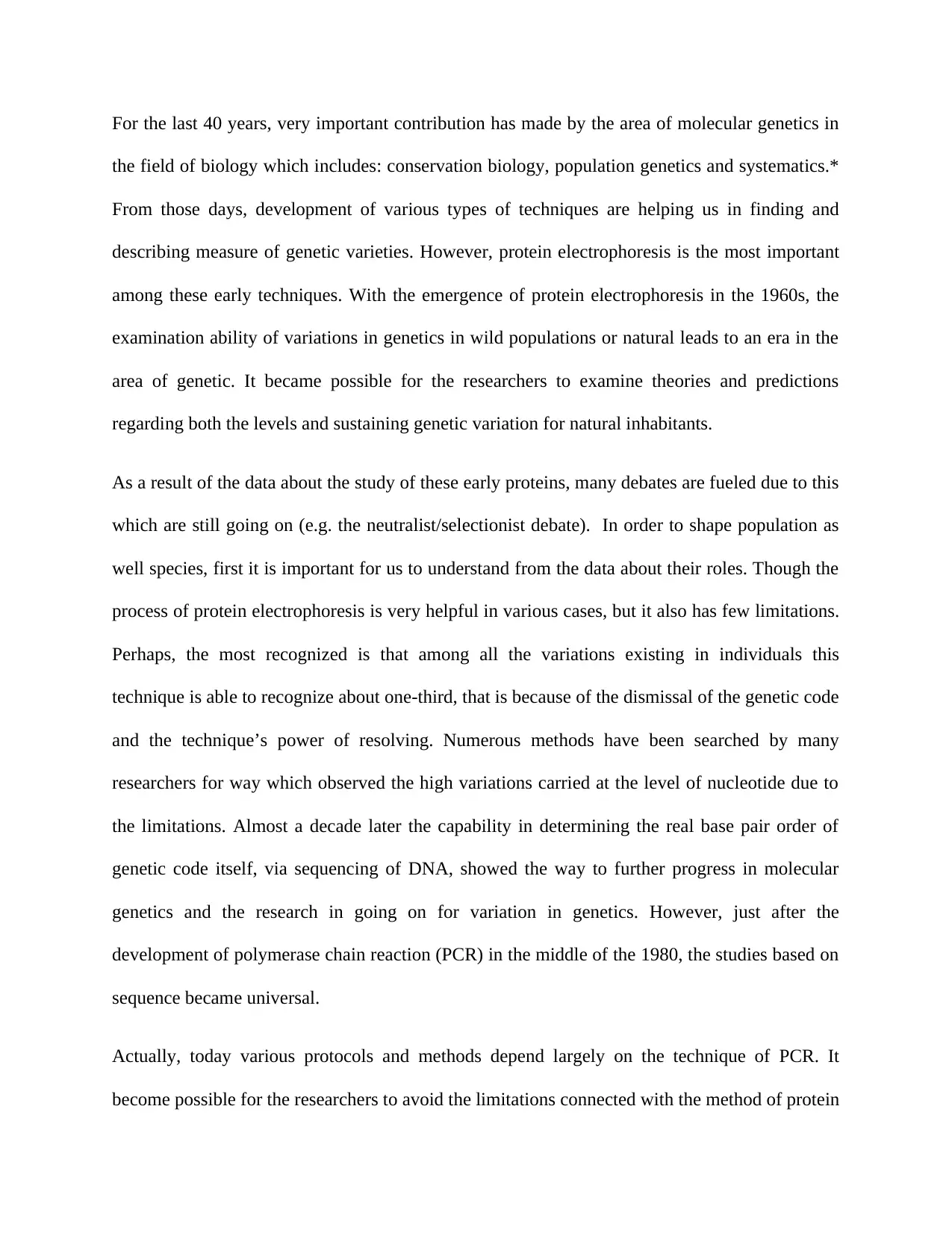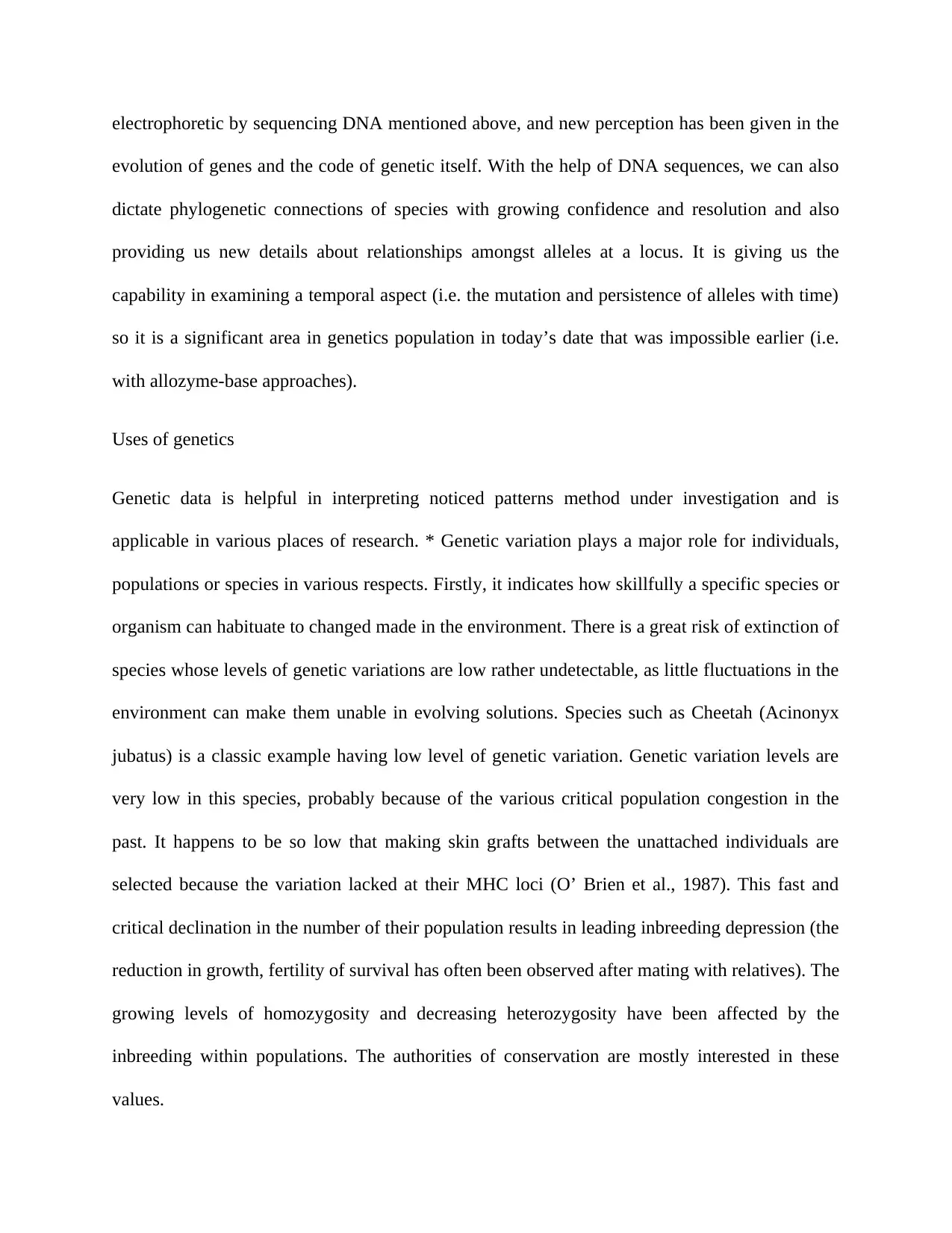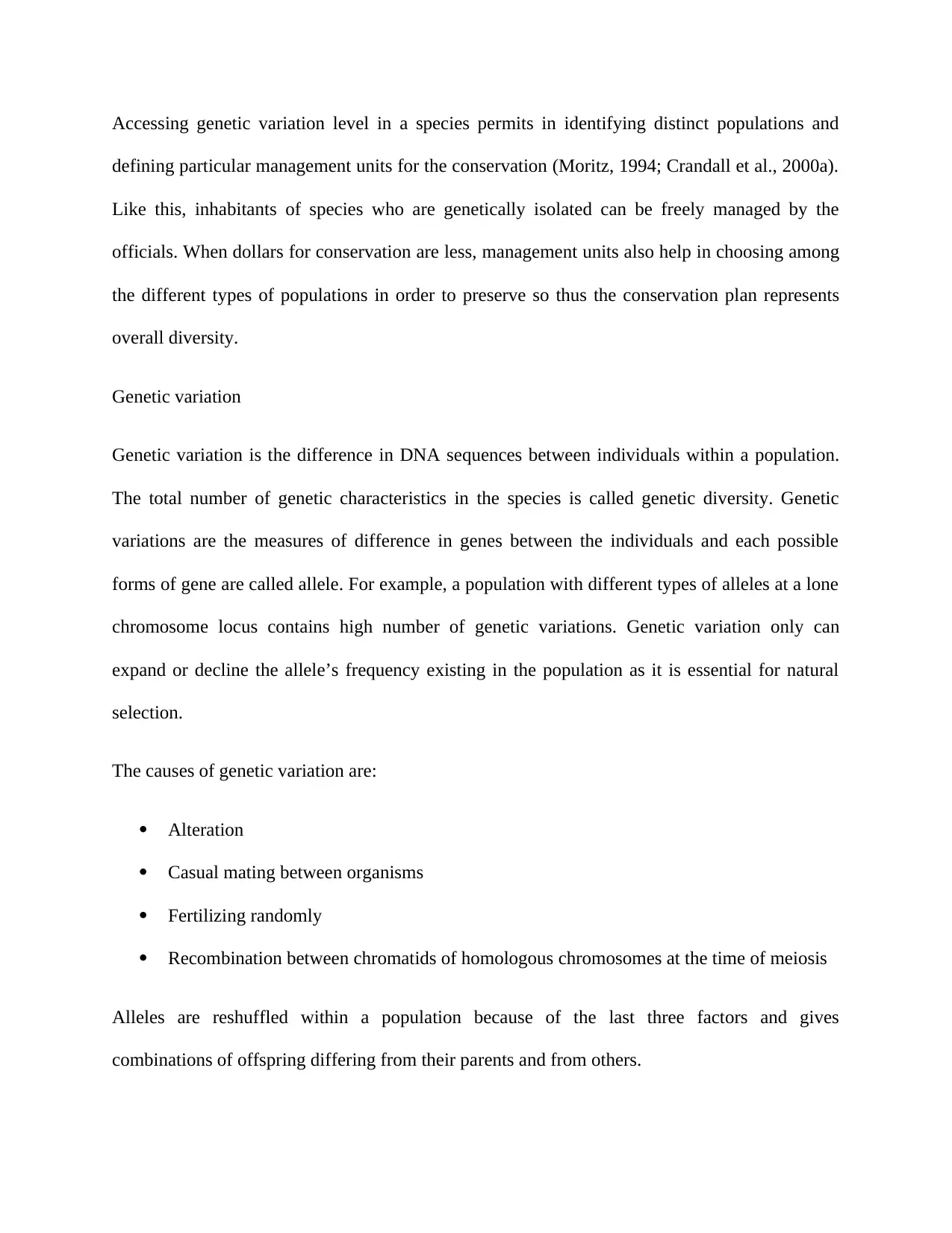Report on Molecular Genetics Contributions in Biology (40 Years)
VerifiedAdded on 2019/10/01
|3
|941
|239
Report
AI Summary
This report provides a comprehensive overview of the significant contributions of molecular genetics to the field of biology over the past 40 years. It begins by highlighting the development of various techniques, such as protein electrophoresis and DNA sequencing, and their impact on understanding genetic variation in wild populations. The report discusses the limitations of early techniques and the advancements brought about by PCR and DNA sequencing. It further explores the role of genetic variation in species adaptation, the risks associated with low genetic diversity, and the importance of genetic data in conservation efforts. The report emphasizes how genetic variation impacts individuals, populations, and species, including the case of the Cheetah. The report also explains the causes of genetic variation, such as alteration, casual mating, random fertilization, and recombination, and their role in reshuffling alleles within a population, leading to diverse offspring. The report concludes by underscoring the importance of understanding genetic variation for the conservation of species and the management of distinct populations.
1 out of 3










![[object Object]](/_next/static/media/star-bottom.7253800d.svg)